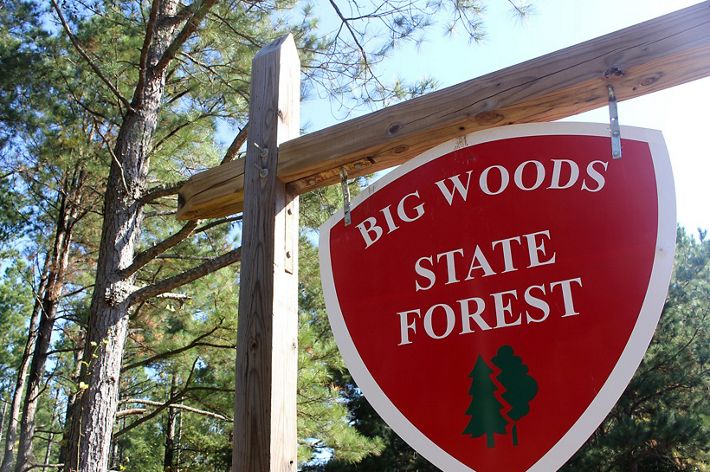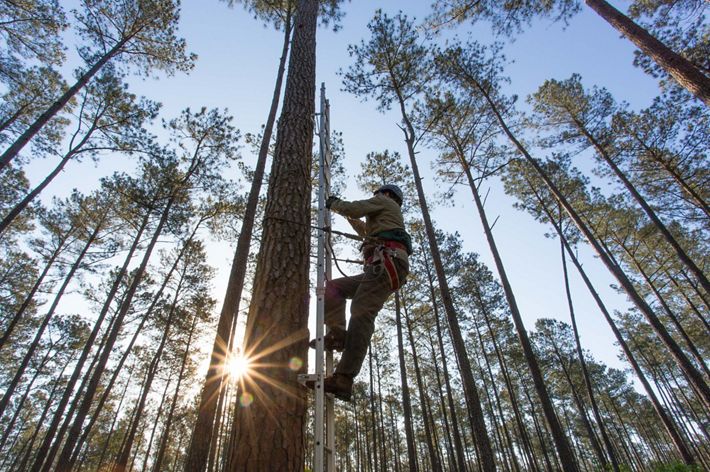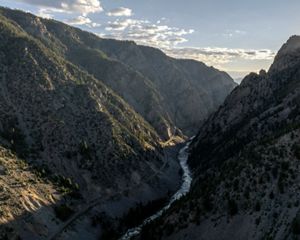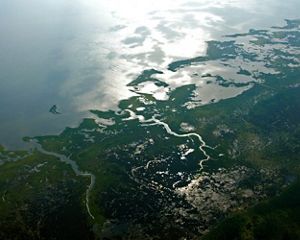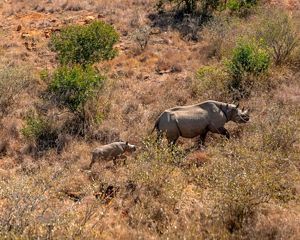
Into the Big Woods
Sandi Rose, a TNC floodplain reforestation manager, is helping restore the primeval forests of the Arkansas Delta.
Text by Timothy A. Schuler | Portraits by Rory Doyle | Issue 2, 2025
You grew up in Arkansas. Did you have any formative moments in nature that primed you for conservation work?
A lot of my early childhood, up into my teens, was spent in the woods, building forts. We played a lot with bugs and caterpillars. I was obsessed with animals.
Now you manage The Nature Conservancy’s floodplain reforestation program in the Arkansas Delta and beyond. What’s the state of the forest there?
The Delta used to be 100% hardwood forest. It was the largest forested wetland ecosystem in North America. But nearly 80% of the Lower Mississippi Alluvial Valley forest cover has been lost, primarily due to conversion to farmland. But if you look at Google Maps, you’ll see a thick, green corridor through Mississippi into Arkansas. That’s called the Big Woods, and The Nature Conservancy in Arkansas has been heavily involved in preserving that corridor of native bottomland forest.
How would you describe the Big Woods?
Coming from southwest Arkansas, the forests are relatively open; you can navigate without too much trouble. The bottomland forest feels similar, but wetter—there’s more of that damp smell. But then when you get down into the bayou, like in a kayak, it changes. You’re in another world. It gets really dark because the canopy of trees is so thick, so it’s hard to get your bearings. It feels like a place that’s not meant for you. There are often snakes wrapped around the bottom of cypress trees as they come up out of the swamp, and turtles poking their little heads above the water. It feels ancient.
Quote: Sandi Rose
From a conservation standpoint, what is its value? Can you tell us about some species that call it home?
The Big Woods are one of the most biodiverse areas in the nation; 40% of North America’s waterfowl fly through the area. It’s got a huge number of fish species—the alligator gar, two types of sturgeon. And it was in the Big Woods that a sighting of the ivory-billed woodpecker was reported.
You’re working to return some of the region’s farmland to forest. What’s the strategy?
A lot of landowners have corners of their acreages that flood regularly or that are just soggy and wet and can be impossible to farm. Between 2014 and 2020, more than $10 billion was spent [in the Mississippi floodplains] on crop insurance payments due to flooding or excess moisture. By 2050, scientists predict that there’s going to be a 30% increase in precipitation in the region. So we collaborate with landowners in Louisiana, Mississippi and Arkansas to reforest their wettest, soggiest, hardest-to-farm acres. We provide an incentive payment of $100 per acre per year for 30 years, and we go in and reforest that acreage with a combination of bottomland tree species that are specifically customized to that soil type and water conditions. And then we’re [enrolling] the project in the carbon market so that we can start generating income to expand reforestation in this area.
Meaning that the reforested plots will generate carbon credits that companies or other entities can purchase.
Right. Everybody learns in school that trees breathe in carbon dioxide and exhale oxygen. Well, the carbon dioxide that they take in is turned into their leaves, their bark, their trunks. They retain that carbon in their cellular structure. That’s how it’s sequestered. Once the trees [reach] a certain diameter, you can start measuring how much carbon they’ve sequestered from the atmosphere. Those measurements translate directly into tonnage that you can then sell through a carbon verifier.
How does reforesting the floodplain benefit the Big Woods more generally?
It provides new habitat for wildlife, which encourages biodiversity. It limits the amount of fertilizer that is put on the land. And it [reduces] the gallons of water pumped out of overtaxed aquifers. The aquifers in the Arkansas Delta are so heavily [burdened] that there is concern that in the next 20 years there will not be sufficient water to irrigate agricultural land.
How do farmers benefit?
We’re targeting our outreach to small landowners. Government programs are looking for the biggest acreages possible that are already connected to existing forests. So if you’ve got 15, 20, 30 acres, and they’re not connected to existing forest, then you’re probably not going to get funded [by government programs].
And some of those smaller-scale farm owners lack property deeds, which makes them ineligible to receive loans or funding from government programs. How does the program help these farmers?
We’ve been partnering with KKAC, an organization that provides educational services and legal support to help small farms leverage their land as an asset. Something that has been a consistent challenge for family farms in the Delta is titling issues. As the original landowners have passed away, these larger acreages have been broken up among the heirs, and so something that used to be 200 acres is now 20 ten-acre plots, and it’s just not useful for anybody to do anything with. So KKAC has been working with those landowners on clearinghouse issues so they can actually leverage some of these programs.
The current reforestation effort is a pilot program targeting restoration on 3,600 acres. What’s the ultimate goal of the project?
The dream is to build a model that is scalable and replicable. This pilot project is kind of a factory to see what works and what doesn’t so we can design a model that can be taken to scale to start reforesting hundreds of thousands of acres at a time. These reforestation carbon projects are rare because they are very hard [to do]. They’re expensive to launch, and some of the scientific protocols [were developed] for places like Brazil and Africa, where deforestation is a big deal. Those contexts just don’t translate to the Delta. So we really are on the cusp of something new in this region. People haven’t done this in the Delta before. We’ve got a lot of eyes on us to see how this plays out.
About the Creators
Timothy A. Schuler is a journalist who reports on the intersection of built and natural environments. He is also an editor for Landscape Architecture Magazine.
Rory Doyle is a photographer based in Mississippi. His work has been published in The New York Times and Smithsonian Magazine, among others.
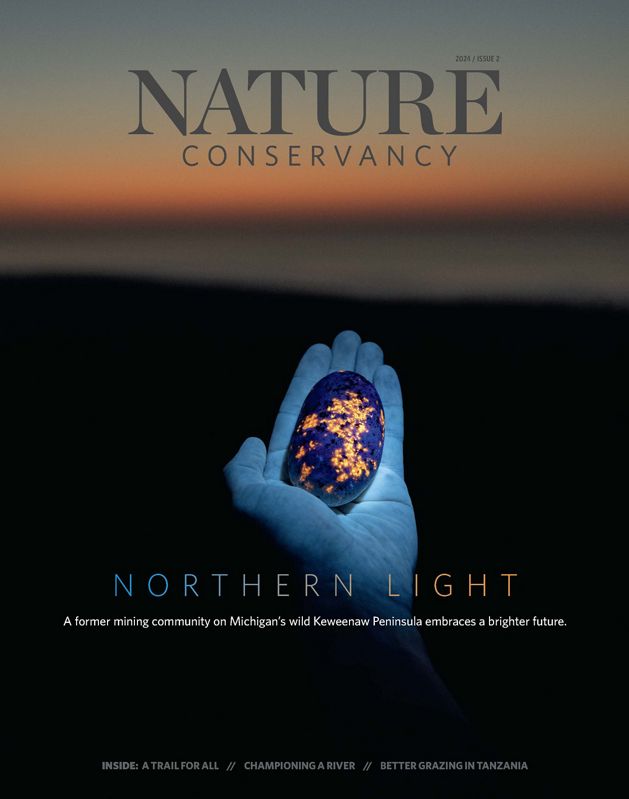
Magazine Stories in Your Inbox
Sign up for the Nature News email and receive conservation stories each month.
